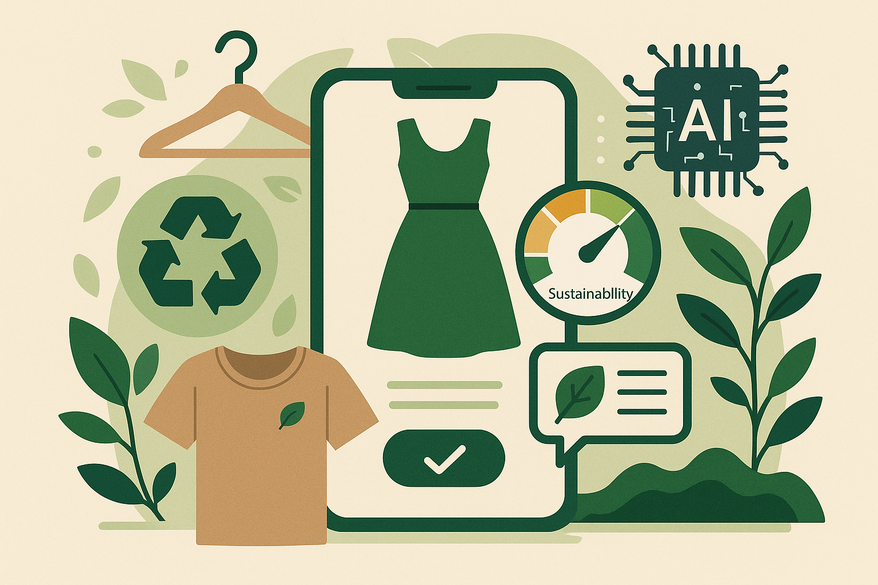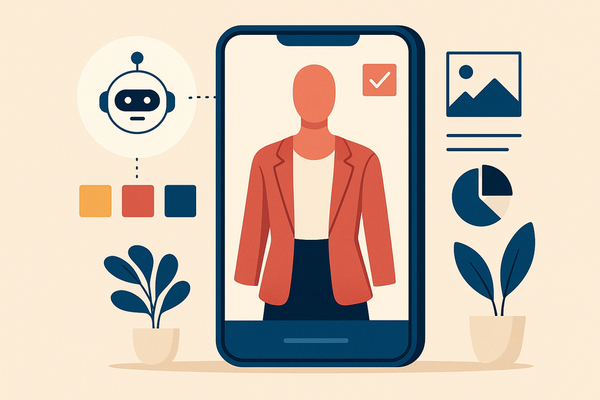Green Fashion Guide AI: Navigating Sustainable and Ethical Fashion
Explore how green fashion guide AI powers sustainable and ethical fashion choices with personalized insights and sustainability scores.

Estimated reading time: 8 minutes
Key Takeaways
- Personalized insights: AI tools curate eco-friendly wardrobes based on data-driven criteria.
- Environmental stewardship: Sustainable fashion minimizes waste, emissions, and water use.
- Transparency: Digital tracking and scoring reveal product life cycles and labor practices.
- Brand advantage: Companies adopting AI reduce overproduction and build consumer trust.
- Actionable tips: Balance style with durability, verify sustainability claims, and favor circularity.
Table of Contents
- Introduction
- What Is Sustainable and Ethical Fashion?
- How Artificial Intelligence Integrates into Sustainable Fashion
- Key Features & Functionalities of a Green Fashion Guide AI
- Impact on Consumers: Sustainable Fashion Advice
- Impact on Brands: Green Fashion Guide AI for Sustainable Fashion
- Actionable Tips for Using AI in Sustainable Fashion
- Challenges & Future Prospects of Green Fashion Guide AI
- Conclusion & Call to Action
- FAQ
Introduction
The fashion world is undergoing a paradigm shift as shoppers demand eco-friendly choices and brands embrace transparency. Searches for green clothing have soared, and tools that guide planet-friendly purchases are more vital than ever. At the core lies sustainable and ethical fashion: a movement dedicated to reducing environmental impact and ensuring fair labor standards across the supply chain.
What Is Sustainable and Ethical Fashion?
Sustainable and ethical fashion aims to:
- Minimize environmental impact: From water consumption to carbon emissions and textile waste.
- Uphold fair labor practices: Guarantee living wages, safe conditions, and transparent sourcing.
Key pillars include:
- Environmental Impact Minimization
- Reduce energy and water use during fiber cultivation and processing.
- Adopt zero-waste pattern cutting and fabric recycling.
- Fair Labor and Social Responsibility
- Enforce living wages and humane working environments.
- Promote transparency so consumers know who made their clothes.
For a deeper dive, see Sustainable Fashion Explained.
How Artificial Intelligence Integrates into Sustainable Fashion
Artificial intelligence is transforming fashion by optimizing resource use, forecasting demand, and enabling circularity. Key applications include:
- Fabric-utilization analysis: Machine learning optimizes pattern layouts to cut textile waste by up to 20%.
- Circular fashion enablement: Digital garment IDs track origin, repair history, resale value, and recycling options.
- Supply-chain optimization: Predictive models reduce overproduction and lower greenhouse-gas emissions.
- Sustainable material recommendations: Algorithms assess water and energy footprints, suggesting lower-impact fibers.
Key Features & Functionalities of a Green Fashion Guide AI
An AI-driven fashion guide blends data science with sustainability metrics to serve both shoppers and brands:
- Personalized Recommendations
- Tune style, fit, and eco-criteria to individual values.
- Suggest brands with low water and carbon footprints.
- Sustainability Scoring
- Rate products on environmental footprint and fair-labor compliance.
- Provide transparent, real-time scores.
- Life Cycle Tracking
- Offer a “farm-to-closet” view of every garment.
- Educate on raw materials, production, transport, and end-of-life options.
- Product Comparison Tools
- Highlight ecological and social differences side by side.
- Visual dashboards simplify impact analysis.
- Wardrobe Management Insights
- Analyze existing closets to suggest upcycling or longevity strategies.
- Recommend sustainable additions to reduce impulse buys.
Impact on Consumers: Sustainable Fashion Advice
Shoppers leveraging AI-driven guides gain:
- Evidence-based insights: Data on water use, carbon footprint, and labor practices for smarter choices.
- Encouragement to buy less: AI nudges to repair, swap, or resell instead of buying new.
- Digital tagging for circularity: QR codes and RFID chips reveal full life-cycle details.
Impact on Brands: Green Fashion Guide AI for Sustainable Fashion
Fashion companies adopting AI tools can:
- Reduce waste and overstock: Demand forecasting cuts unsold inventory by up to 30%.
- Save energy in production: AI controls machinery for optimal power and water use.
- Enhance supply-chain transparency: Real-time tracking backed by blockchain.
- Build brand trust: Public sustainability scores foster accountability and loyalty.
Actionable Tips for Using AI in Sustainable Fashion
- Choose guides with verified criteria: Look for tools that publish data sources and scoring methods.
- Cross-reference recommendations: Verify AI suggestions with certifications like Fair Trade or GOTS.
- Balance style with durability: Opt for timeless designs from long-lasting materials.
- Monitor sustainability scores: Ensure footprint calculations align with your values.
Challenges & Future Prospects of Green Fashion Guide AI
Current challenges include inconsistent definitions of “sustainability,” data gaps for smaller brands, and potential greenwashing. Looking ahead, we can expect:
- Deeper life-cycle analysis: Integrated carbon, water, and social impact metrics.
- AI-driven material science: Accelerated discovery of biofabricated textiles and low-impact dyes.
- Standardized metrics: Collaboration among regulators, brands, and tech platforms for aligned scoring.
Conclusion & Call to Action
A green fashion guide AI bridges intentions and truly sustainable choices. By offering personalized insights, clear scores, and life-cycle tracking, these tools empower both consumers and brands to reduce their environmental footprint and champion fair labor practices.
Ready to make a difference? Explore AI-based platforms, download eco-fashion apps, and scan digital garment IDs on your next shopping trip. Together, we can accelerate the shift to sustainable and ethical fashion—one data-driven choice at a time.
FAQ
- What is a Green Fashion Guide AI?
- An AI-powered assistant that analyzes materials, scores sustainability, and offers personalized recommendations for eco-friendly fashion.
- How does it benefit consumers and brands?
- Consumers gain clarity on environmental impact and ethical sourcing; brands reduce waste, optimize production, and build trust.
- Are AI sustainability scores reliable?
- Scores depend on data quality and model transparency. Choose tools that publish their methodology and verify with third-party certifications.





